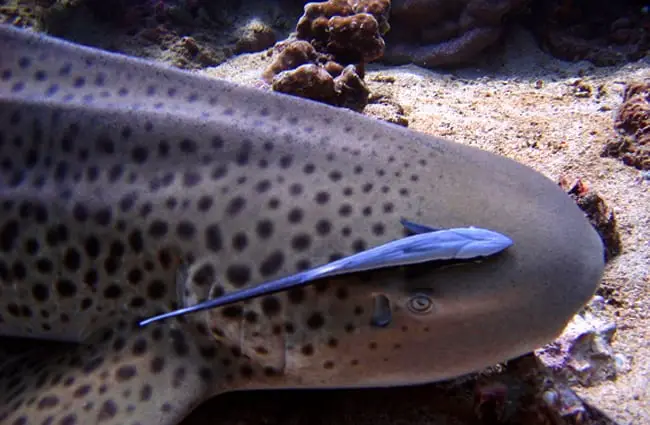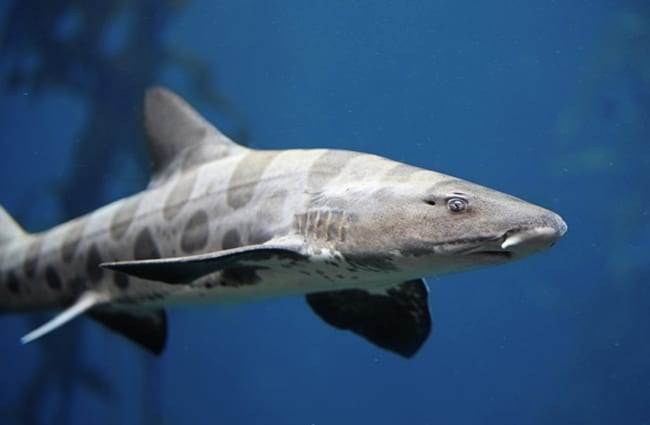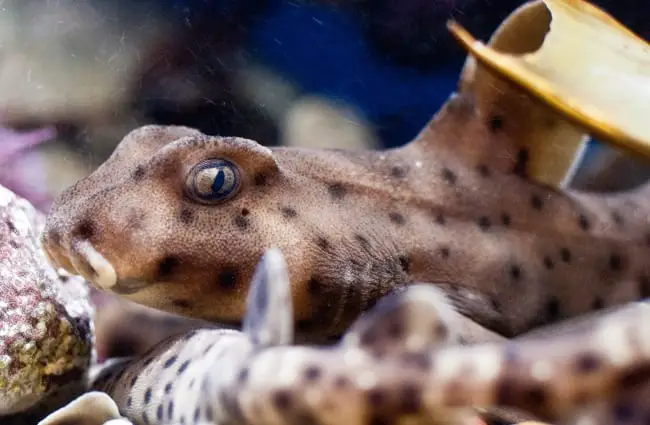The ocean holds countless wonders, and among the most striking is the leopard shark, a creature often encountered in coastal waters but surprisingly little known to many. This guide delves into the fascinating world of Triakis semifasciata, exploring its biology, behavior, habitat, and its role within the marine ecosystem. From its distinctive markings to its gentle nature, the leopard shark presents a compelling subject for both casual observers and dedicated marine biologists.
What is a Leopard Shark?
The leopard shark, despite its name, is a small, bottom‑dwelling species that is not a large predatory shark. It belongs to the houndshark family, known for their relatively small size and bottom‑dwelling habits. The name stems from the distinctive pattern of dark saddles and spots across its back, resembling the coat of a leopard. These markings are unique to each individual, much like human fingerprints, and provide a valuable tool for researchers tracking populations.

Physical Characteristics
Leopard sharks are slender and cylindrical, typically reaching lengths of 3 to 5 feet, though some individuals have been recorded exceeding 6 feet. They possess a relatively large, broad head and small eyes. Their coloration ranges from pale gray to bronze, providing effective camouflage against the sandy or rocky seafloor. Two dorsal fins, each with a sharp spine, are present, as well as a pronounced anal fin. Pectoral fins are large and rounded, aiding in maneuverability.
Habitat and Distribution
These sharks are primarily found in the eastern Pacific Ocean, ranging from Southern California and the Gulf of California down to Peru. They favor shallow, coastal waters, including bays, estuaries, and rocky reefs. They are commonly observed in kelp forests, which provide both shelter and foraging opportunities.

Leopard sharks are known to aggregate in large numbers in specific locations, particularly during the warmer months. These gatherings are thought to be related to mating and pupping. They exhibit a preference for sandy or muddy substrates, where they can easily bury themselves to ambush prey or rest.
Diet and Feeding Behavior
As bottom feeders, leopard sharks have a diverse diet consisting of small bony fishes, crustaceans like crabs and shrimp, clams, squid, and even worms. They are opportunistic hunters, utilizing a combination of scent and electroreception to locate prey buried in the sediment. Their teeth are adapted for crushing shellfish and gripping slippery fish.
They often forage in shallow waters, sometimes venturing into intertidal zones during high tide. A unique feeding strategy involves stirring up the seafloor with their snouts, exposing hidden prey. While not aggressive towards humans, they may occasionally investigate divers or snorkelers, mistaking them for potential food sources.

Reproduction and Life Cycle
Leopard sharks exhibit a reproductive strategy known as ovoviviparity. This means that the eggs develop inside the mother’s body, and the pups are born live. The gestation period is thought to be around 12 to 14 months. Litters typically range from 1 to 6 pups, although larger litters have been recorded.
Pups are born relatively small, measuring around 16 to 20 inches in length. They are fully independent from birth and receive no parental care. Leopard sharks are slow growing and reach sexual maturity relatively late in life, around 7 to 10 years. They are thought to live for at least 30 years, and potentially much longer.
Ecological Role and Interactions
Leopard sharks play an important role in maintaining the health of coastal ecosystems. As predators, they help control populations of invertebrates and small fish. They also serve as prey for larger sharks and marine mammals, such as seals and sea lions. Their foraging behavior contributes to nutrient cycling and the overall productivity of the seafloor.
They often coexist peacefully with other marine species, including rays, sea turtles, and various fish. However, competition for food can occur in areas with high densities of predators. Leopard sharks are known to aggregate in specific locations, creating opportunities for researchers to study their social behavior and interactions.

Leopard Sharks and Humans
Leopard sharks are generally harmless to humans and pose little threat. They are often observed by divers and snorkelers, and are considered a popular attraction in many coastal areas. However, it is important to maintain a respectful distance and avoid disturbing their natural behavior.
Commercial fisheries have occasionally taken leopard sharks as bycatch. Their populations have declined in recent years due to habitat loss, pollution, and overfishing. Conservation efforts are underway to protect their critical habitats and regulate fishing practices.
Encountering a Leopard Shark
If you encounter a leopard shark while swimming or diving, remain calm and avoid sudden movements. Do not attempt to touch or feed the shark. Maintain a safe distance and allow the animal to move freely. Report any sightings to local marine authorities.
Caring for Leopard Sharks in Captivity
Maintaining leopard sharks in captivity requires specialized facilities and expertise. Large aquariums with ample swimming space and a carefully controlled environment are essential. A balanced diet consisting of fresh fish, squid, and crustaceans must be provided. Regular monitoring of water quality and health is crucial.
Enrichment activities, such as introducing new objects or simulating natural prey, can help stimulate the sharks’ behavior and prevent boredom. It is important to avoid overcrowding and ensure that the animals have sufficient space to express their natural behaviors. Captive breeding programs can contribute to conservation efforts by providing a source of animals for research and potential reintroduction into the wild.

Interesting Facts
- Leopard sharks are one of the most common shark species found in California coastal waters.
- They are known to gather in large aggregations during the summer months, particularly around Point Conception.
- Their distinctive markings are unique to each individual, similar to human fingerprints.
- They have electroreceptors, allowing them to detect the electrical fields generated by prey.
- They are ovoviviparous, meaning the embryos develop inside eggs retained within the mother’s body.
The leopard shark, with its gentle nature and unique characteristics, continues to fascinate scientists and nature enthusiasts alike. Understanding its biology, behavior, and ecological role is crucial for ensuring its conservation and the health of our coastal ecosystems. By promoting responsible practices and supporting research efforts, we can help protect this remarkable species for generations to come.

![Red Angus Closeup of a beautiful Red Angus cowPhoto by: U.S. Department of Agriculture [pubic domain]https://creativecommons.org/licenses/by/2.0/](https://animals.net/wp-content/uploads/2020/03/Red-Angus-4-238x178.jpg)




![Red Angus Closeup of a beautiful Red Angus cowPhoto by: U.S. Department of Agriculture [pubic domain]https://creativecommons.org/licenses/by/2.0/](https://animals.net/wp-content/uploads/2020/03/Red-Angus-4-100x75.jpg)

